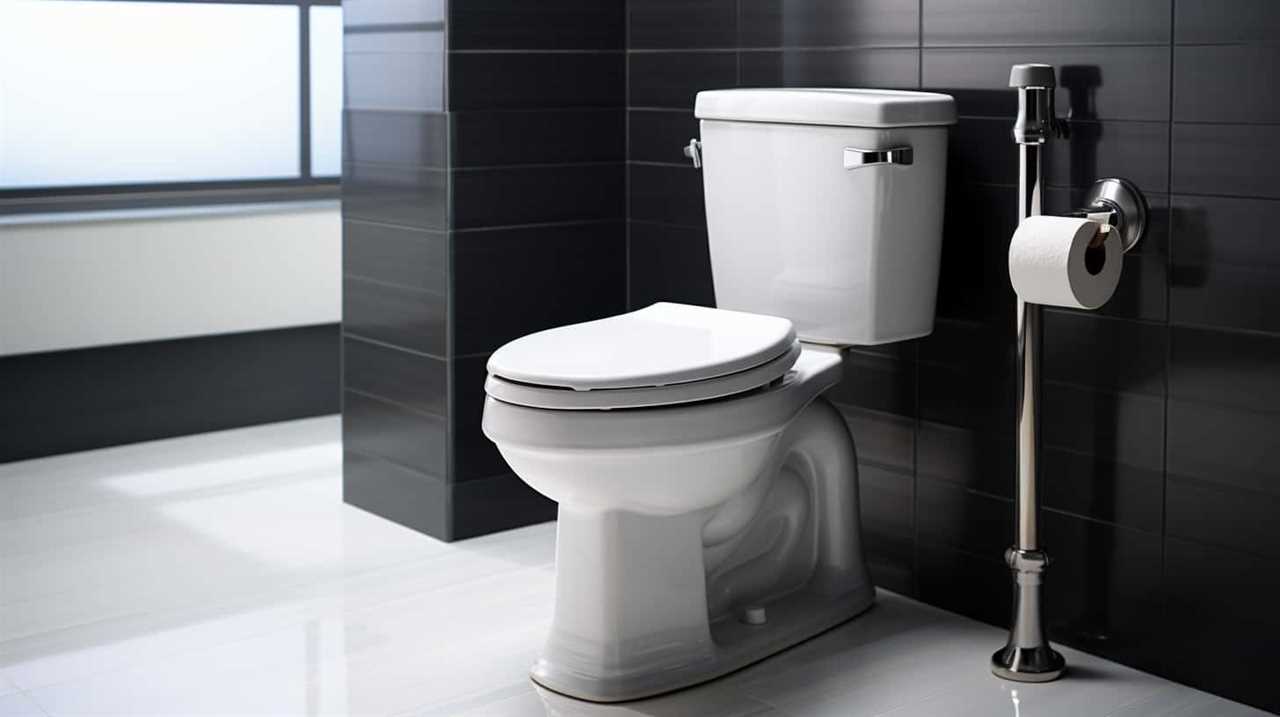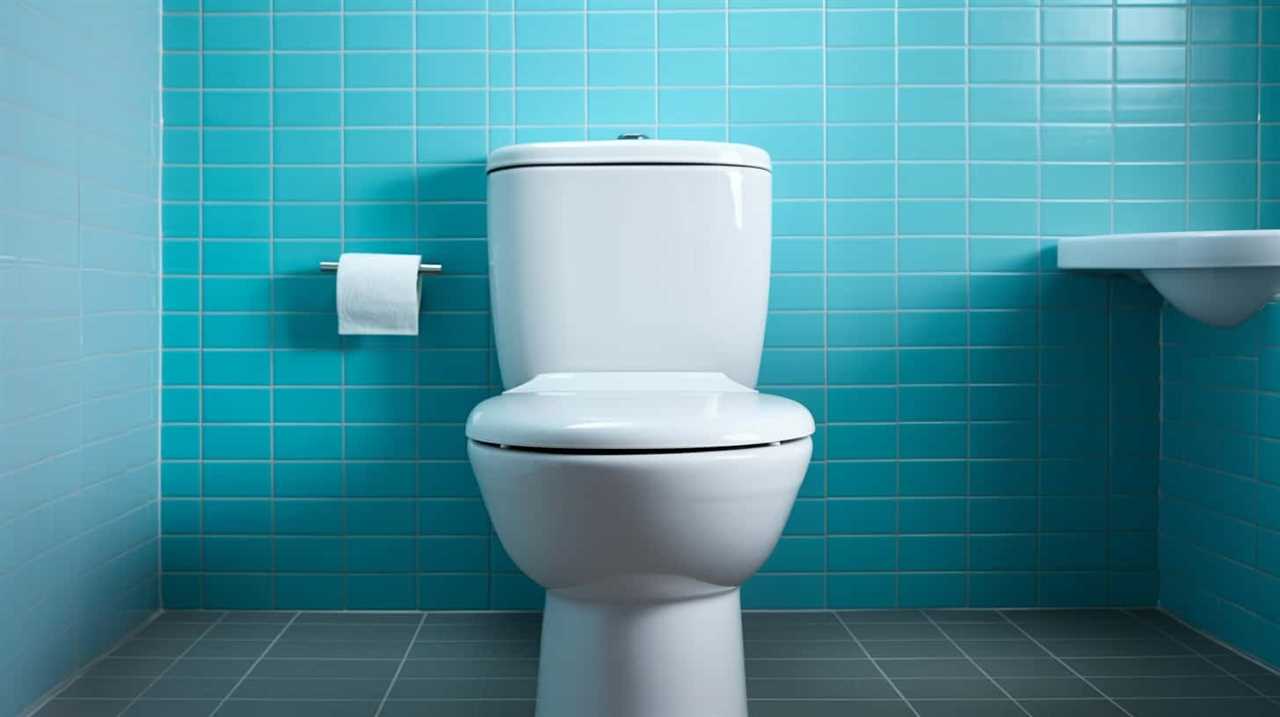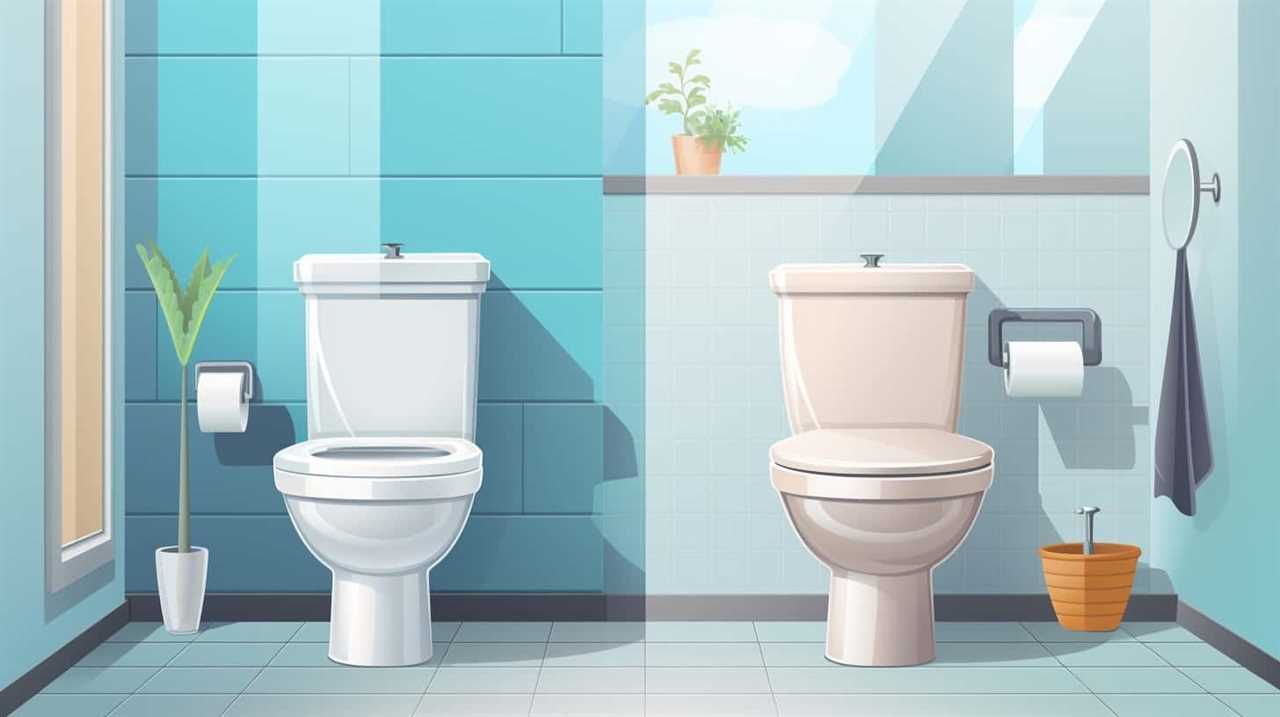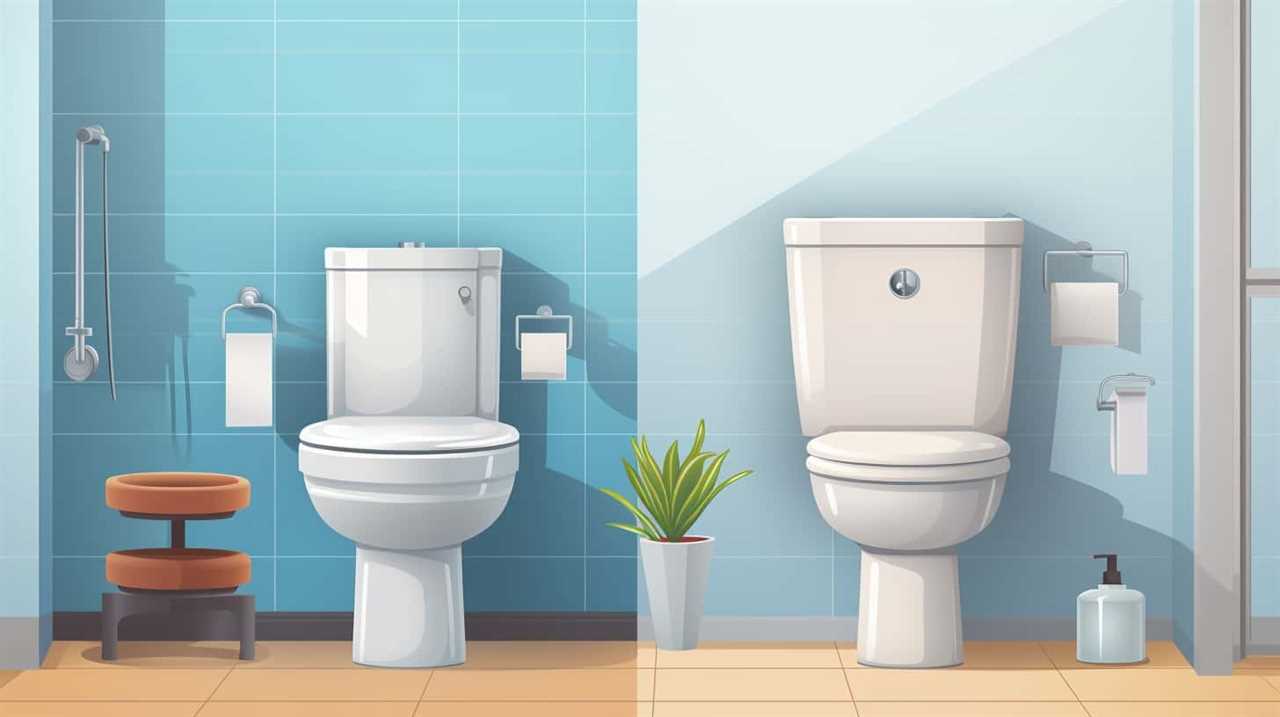Have you ever wondered why our low flow toilets sometimes refuse to flush?
Well, fear not, fellow plumbing enthusiasts! In this brief article, we will delve into the intricacies of this conundrum.
From clogged drain lines to faulty flapper valves, we will explore the various culprits behind our inadequate tank fills.
So, fasten your tool belts and prepare for a technical journey as we uncover the secrets behind our mysteriously uncooperative low flow toilets.

Key Takeaways
- A clogged drain line can cause low flow toilets to not flush properly.
- Insufficient water pressure within the plumbing system can also lead to flushing problems.
- Malfunctions in the flapper valve can result in incomplete or ineffective flushing.
- Inadequate tank fill can cause low water pressure and weak flushes in low flow toilets.
Clogged Drain Line
The clogged drain line is a common issue that can cause low flow toilets to not flush properly. When the drain line becomes blocked, water from the toilet bowl can’t flow through the pipes efficiently, resulting in a weak or incomplete flush.
A clogged drain line can occur due to various reasons, such as flushing excessive toilet paper, debris buildup, or foreign objects being flushed down the toilet. This obstruction prevents the sewage from flowing freely, leading to potential sewage backup in the toilet bowl or other plumbing fixtures.
It’s crucial to address a clogged drain line promptly to avoid further complications and potential damage to the plumbing system. Regular maintenance and proper disposal practices can help prevent this issue and maintain optimal toilet performance.
Insufficient Water Pressure
To continue our discussion on the issue of low flow toilets not flushing properly, another possible cause could be insufficient water pressure within the plumbing system. Water conservation measures have led to the development of low flow toilets, which have numerous benefits such as reducing water usage and lowering utility bills. However, these toilets require a certain amount of water pressure to effectively flush waste down the drain. Insufficient water pressure can prevent the toilet from flushing properly, resulting in clogs and backups. To help you understand the impact of insufficient water pressure on low flow toilets, here is a table showcasing the water pressure requirements for different types of toilets:

| Toilet Type | Minimum Water Pressure (psi) | Maximum Water Pressure (psi) |
|---|---|---|
| Gravity-Fed | 10 | 25 |
| Pressure-Assisted | 20 | 80 |
| Dual-Flush | 10 | 45 |
If your low flow toilet is not flushing properly, it’s essential to check the water pressure in your plumbing system to ensure it meets the requirements for your specific toilet type.
Faulty Flapper Valve
We may experience issues with a faulty flapper valve in our low flow toilet. The flapper valve is an essential component responsible for controlling the flow of water from the tank into the bowl during a flush. Over time, the flapper valve can become worn or damaged, resulting in leaks or incomplete flushing.
To resolve this problem, flapper valve replacement or maintenance is necessary. Regular maintenance involves inspecting the flapper valve for signs of wear, such as cracks or decay, and cleaning it to remove any debris that may interfere with its proper functioning. If the flapper valve is beyond repair, it should be replaced promptly to ensure optimal flush performance.
Transitioning to the subsequent section, another cause of low flow toilet issues is inadequate tank fill.

Inadequate Tank Fill
One possible cause for a low flow toilet not flushing properly is due to an insufficient amount of water filling the tank. When the tank does not fill up enough, there is not enough water pressure to create a strong flush. This can be a frustrating problem, but fortunately, there are DIY troubleshooting tips to help resolve it.
To better understand the importance of adequate tank fill, let’s take a look at the water conservation benefits of low flow toilets. These toilets are designed to use less water per flush, which helps conserve water and reduce utility bills. However, if the tank does not fill up properly, the toilet may not function as intended, defeating the purpose of water conservation.
To troubleshoot an inadequate tank fill, consider the following tips:
| Troubleshooting Tips | Description |
|---|---|
| Check the water supply valve | Ensure that the water supply valve is fully open to allow maximum water flow into the tank. |
| Inspect the fill valve | Check for any blockages or malfunctions in the fill valve that may be restricting water flow into the tank. |
| Adjust the fill valve height | If the fill valve height is set too low, it may not allow enough water to enter the tank. Adjust it to the appropriate level. |
Improper Toilet Installation
If the tank doesn’t fill up properly, it can also be a sign of improper toilet installation. When a toilet isn’t installed correctly, it can cause issues with the water supply to the tank, resulting in insufficient water to flush the toilet bowl effectively.

Improper installation can lead to misaligned or loose connections between the water supply line and the toilet tank. This can cause leaks or restricted water flow, preventing the tank from filling up adequately.
Additionally, if the toilet bowl isn’t properly sealed to the floor, it can create a gap that allows water to escape, resulting in a weak flush. It’s crucial to ensure that the toilet is installed correctly to maintain the proper functioning of the low flow toilet.
Frequently Asked Questions
How Can I Tell if My Toilet Has a Clogged Drain Line?
To determine if a low flow toilet has a clogged drain line, inspect for signs of water backup or slow drainage. If present, follow troubleshooting steps to fix the issue, such as using a plunger or a drain snake.
What Are Some Common Causes of Insufficient Water Pressure in a Low Flow Toilet?
Some common causes of insufficient water pressure in a low flow toilet include clogged water supply lines, a faulty fill valve, or a malfunctioning pressure regulator. Troubleshooting low flow toilets requires careful examination and troubleshooting techniques.

How Can I Determine if the Flapper Valve in My Low Flow Toilet Is Faulty?
To determine if the flapper valve in our low flow toilet is faulty, we can look for signs such as water continuously running, incomplete flushes, or water leaking into the bowl. Here are some troubleshooting tips.
Are There Any DIY Solutions to Fix Inadequate Tank Fill in a Low Flow Toilet?
We’ve found some DIY solutions and troubleshooting tips to fix inadequate tank fill in a low flow toilet. These methods can help you address the issue and ensure proper functioning of your toilet.
What Are the Signs of Improper Toilet Installation That May Affect the Flushing Performance of a Low Flow Toilet?
Improper toilet installation can negatively impact the flushing performance of a low flow toilet. Signs of this include leaks, weak flush, and inconsistent water levels. Proper toilet maintenance and troubleshooting are essential for optimal functionality.
Conclusion
In conclusion, when experiencing issues with a low flow toilet not flushing, it’s important to consider potential causes such as:

- A clogged drain line
- Insufficient water pressure
- A faulty flapper valve
- Inadequate tank fill
- Improper toilet installation
By addressing these factors, one can ensure optimal performance and functionality of their low flow toilet.










